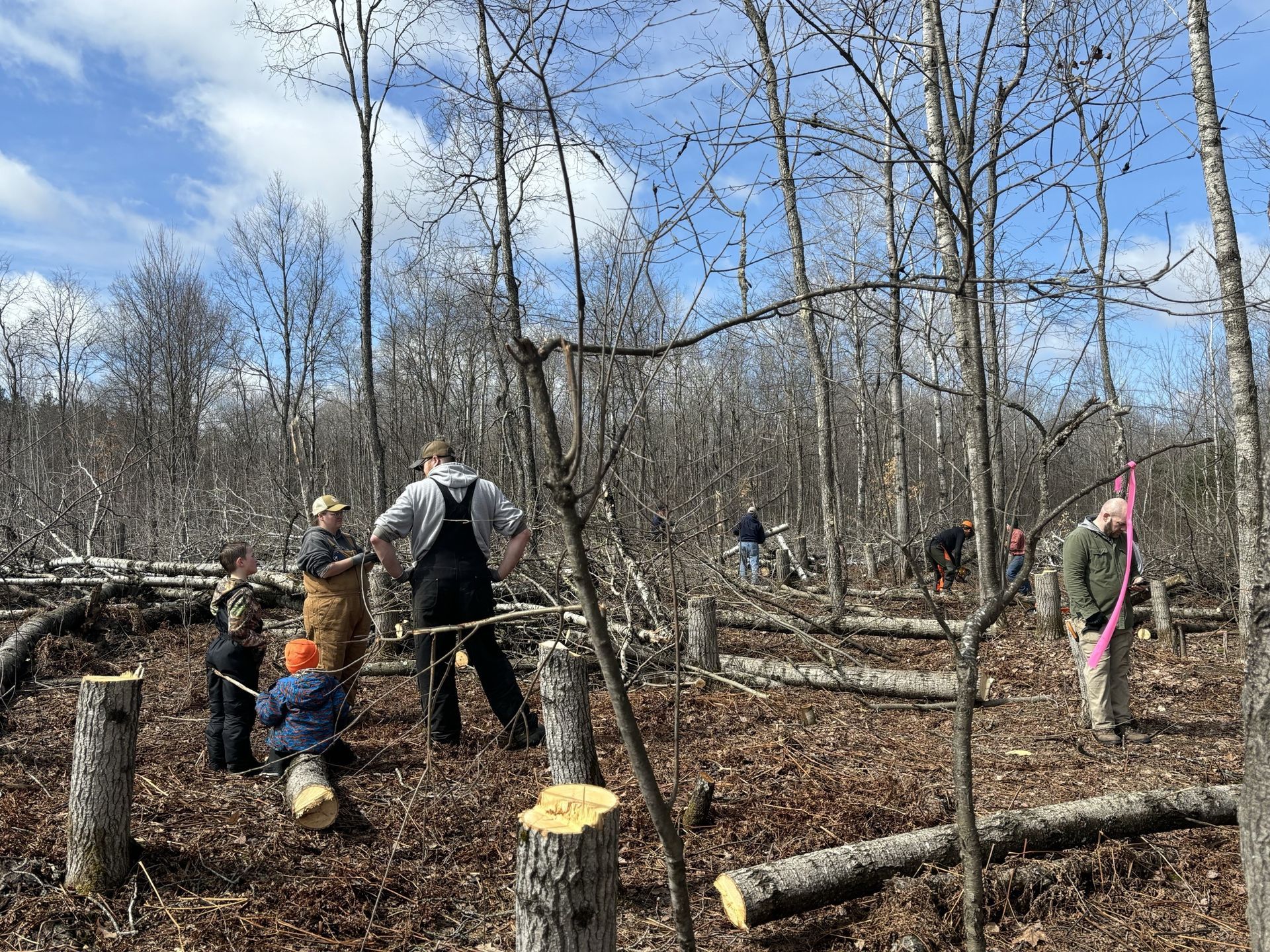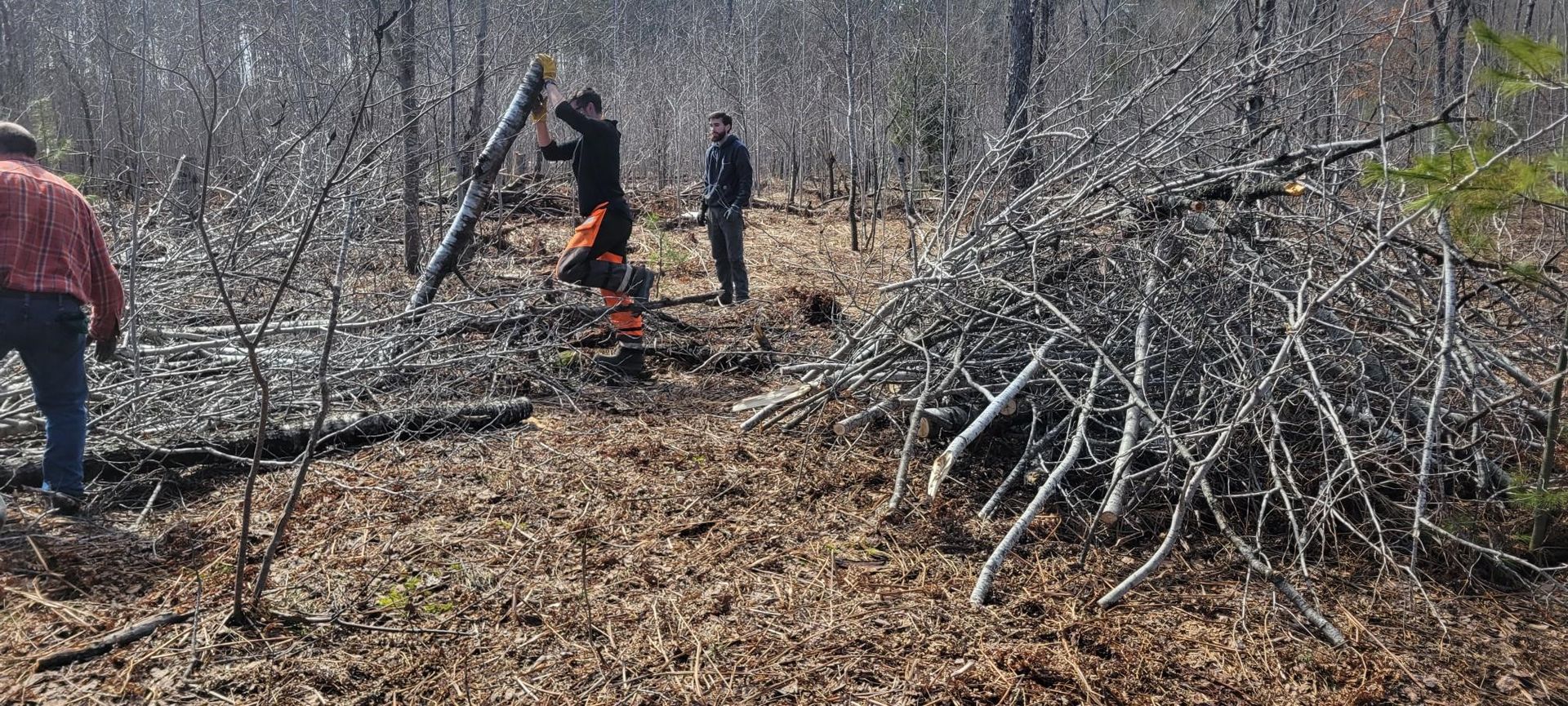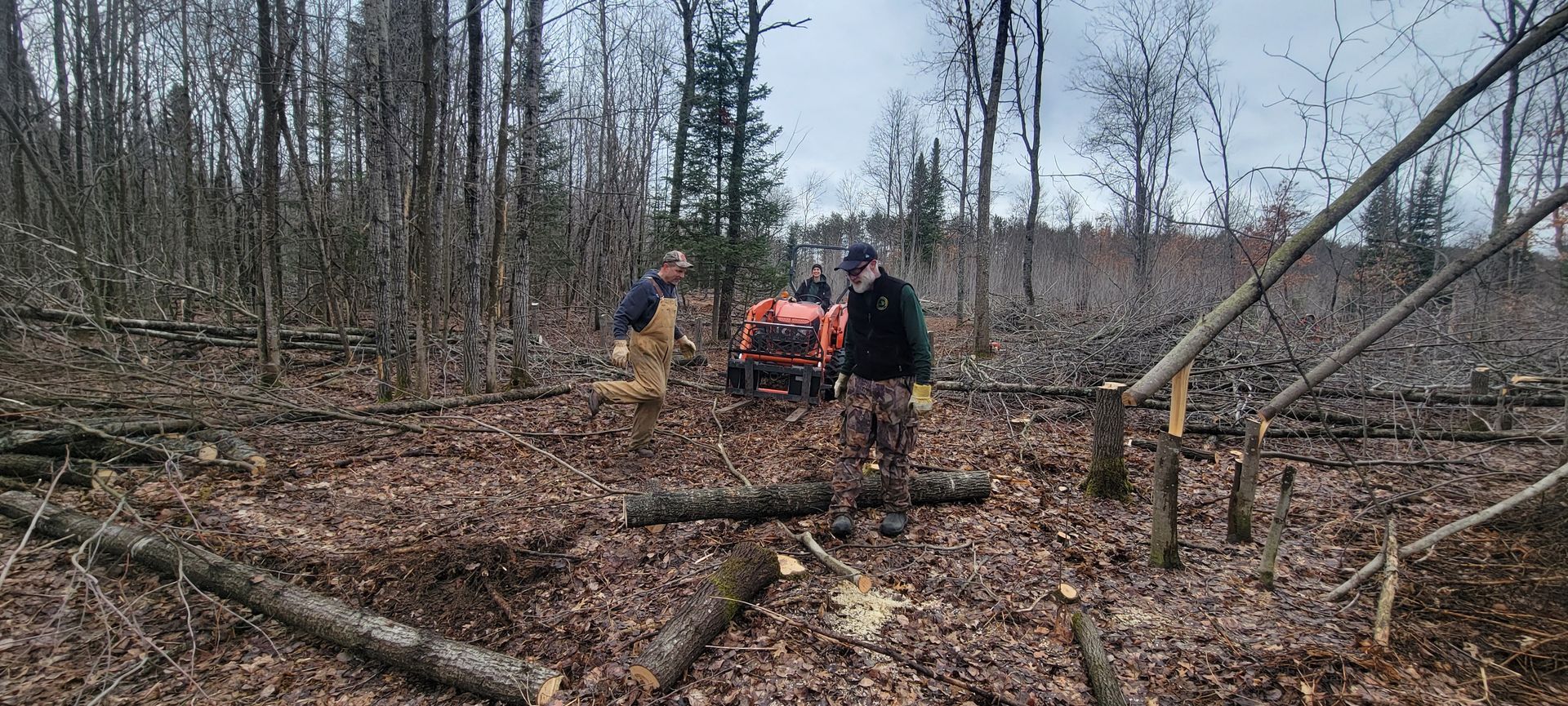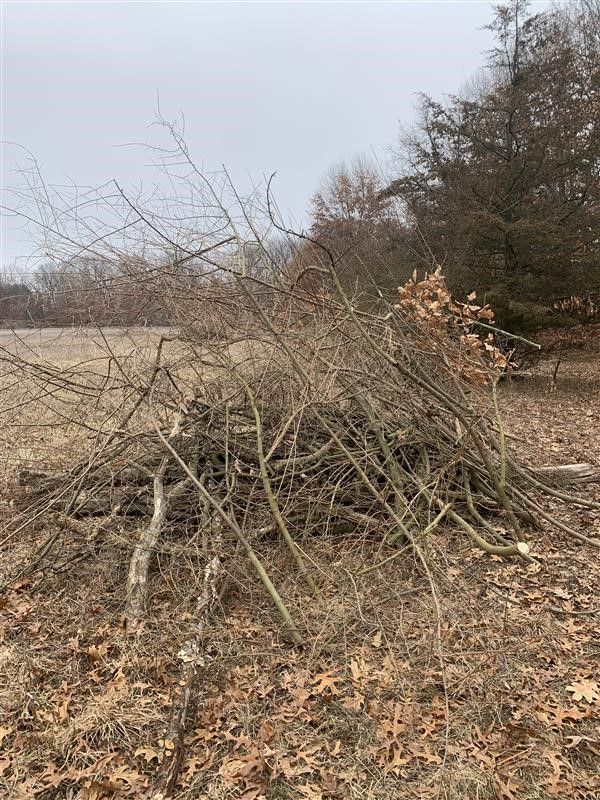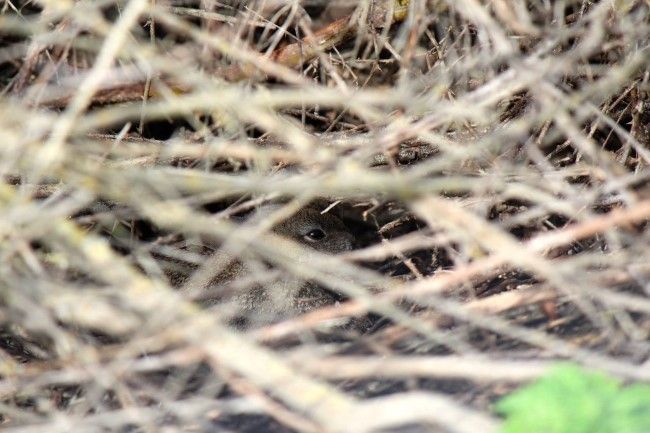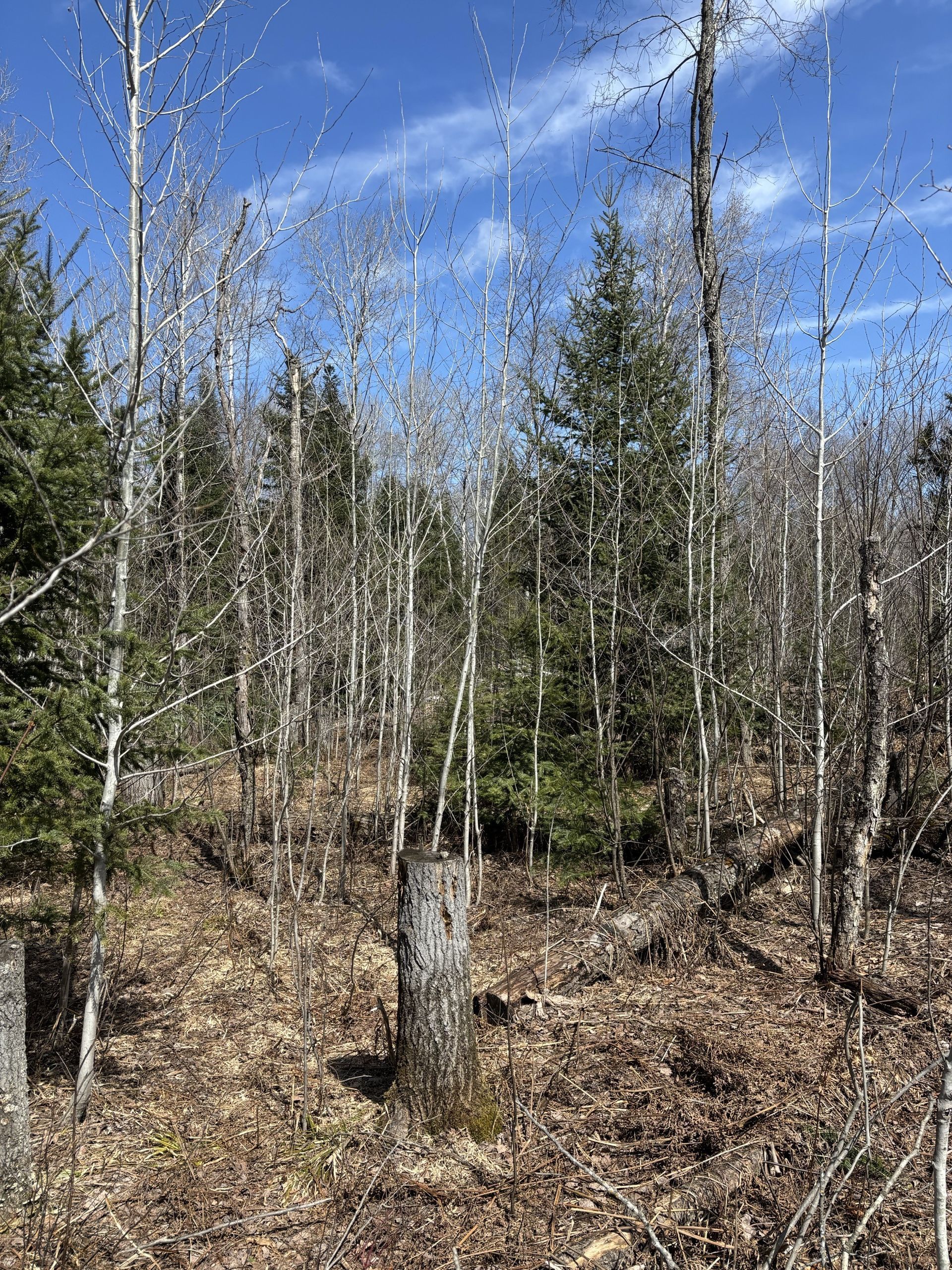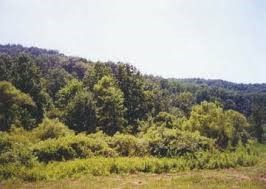On the Ground: Brush Piles & Edge Feathering in the Traverse City Forest Management Unit
On Saturday, April 5, 2025, MUCC’s On the Ground program hosted 28 volunteers in partnership with Land Ethics LLC for a brush pile building and edge feathering project at the Traverse City Forest Management Unit in Kalkaska County. This area is home to many abundant species of wildlife and is a popular destination for deer, turkeys, and grouse.
Volunteers Work Hard for a Reward
During this project, volunteers split into separate groups to tackle the brush piles. Two groups of volunteers started at opposite ends and worked toward each other within the same section, while another group worked on a different side of the area. Each group had a few individuals trained in chainsaw work to help cut up larger logs and limbs on the ground, speeding up the process. Brush piles were constructed with larger logs on the bottom and smaller branches on top, creating a stable and secure pile that can withstand the weather elements and provide more cover for wildlife. Another group of Michigan DNR staff also brought tractors to help push existing brush into piles and clear out the area. This helped the volunteers conveniently build the brush piles while also incorporating edge feathering into the landscape. In total, volunteers improved approximately 17 acres of wildlife habitat directly through this project.
Each volunteer who attended also received a reward: an entry into a guided hunt giveaway sponsored by Land Ethics LLC. At the end of the day, the winners were drawn for a guided upland bird hunt for two! Each volunteer who attended was also entered into MUCC’s “Gear up for Habitat” giveaway, a monthly drawing where the winner will receive a Mystery Ranch backpack. Anyone who volunteers at an On the Ground event from April through September is automatically entered to win this exclusive deal.
Why is it Important?
Building brush piles for wildlife is important because it can help replace naturally sheltered areas that are removed due to human interference like agriculture or construction. Brush piles provide wildlife with dense cover and opportunities to hide from predators, build nests and raise young, or to shelter from severe weather conditions. To maximize efficiency, it’s best to build brush piles near transition zones where multiple habitats converge. Some great examples include forest edges and openings, field corners and edges, stream and marsh edges, or even near land that is being cleared (Maryland Department of Natural Resources).
Common wildlife species that use brush piles as part of their life cycle include rabbits, chipmunks, squirrels, mice, voles, salamanders, snakes, and ground-nesting birds. Predators like weasels, foxes, and birds of prey will also use brush piles as hunting grounds to find their next meal. Additionally, the decaying wood that is part of the brush pile will provide nutrients to the soil and attract insects that serve as food for birds and small mammals (U.S. Fish and Wildlife Service).
Edge feathering is an important habitat improvement technique because it helps create more opportunities for cover that benefits many wildlife species. It involves cutting and brush clipping selected trees along a border between a mature forest and an open area like grasslands, old fields, or cropland. This creates a shrubby area with dense woody cover that acts as a soft transition between these different habitats, establishing a safe place for wildlife to nest and hide from predators. Edge feathering may also involve planting trees or shrubs to provide an additional food source for wildlife. The goal of edge feathering is to have transition zones between habitats that consist of a mixture of plants and animals from each adjoining ecosystem, therefore producing a greater overall species diversity than what is found in either ecosystem. This concept is also called the “edge-effect”. (Kentucky Department of Fish and Wildlife, USDA Natural Resource Conservation Service).
Learn More
Want to volunteer to build brush piles at a project near you? Visit mucc.org/on-the-ground for more information on upcoming events. We work to conserve and enhance Michigan’s public lands by hosting volunteer stewardship projects across the state with the goal of improving wildlife habitat. Some of our events include brush pile building, invasive species removal, tree plantings, wood duck boxes, river cleanups, and more. We welcome all ages, and our projects are family friendly. All registered volunteers receive lunch and a free appreciation gift for their efforts, so don’t wait! Registration links for each project can be found on our website.
To stay connected with all things MUCC, follow us on Facebook, Instagram, X, and LinkedIn.

